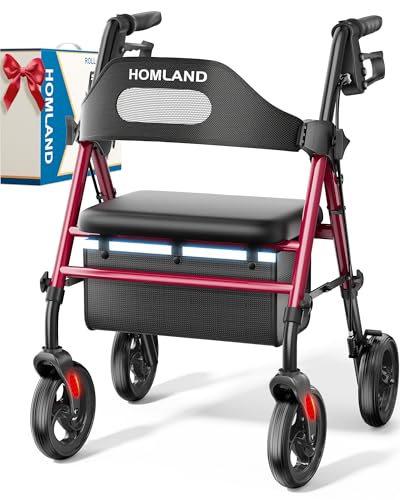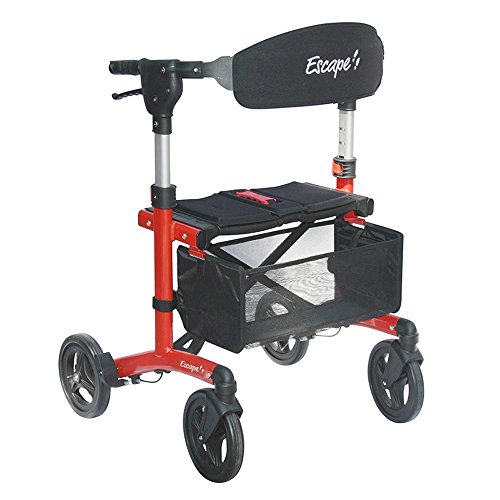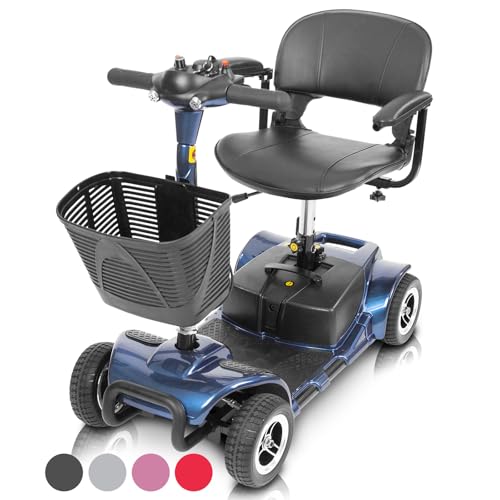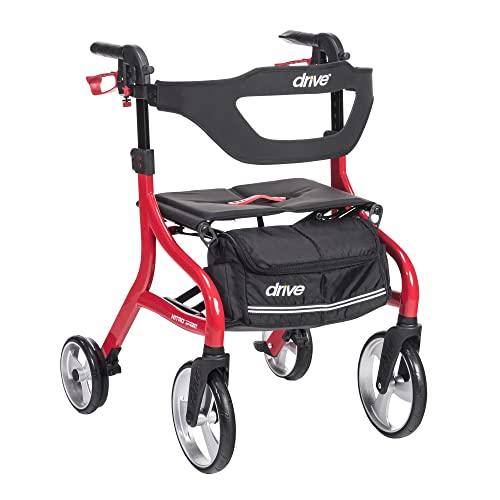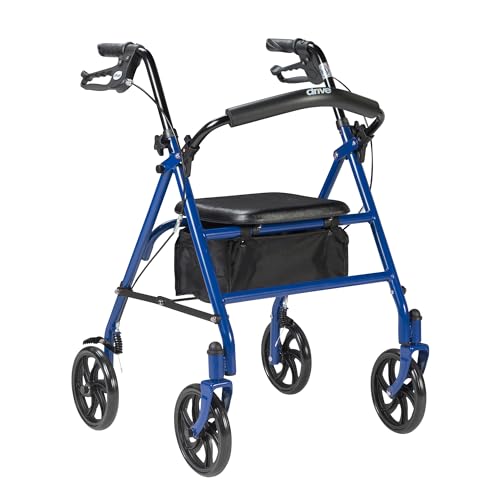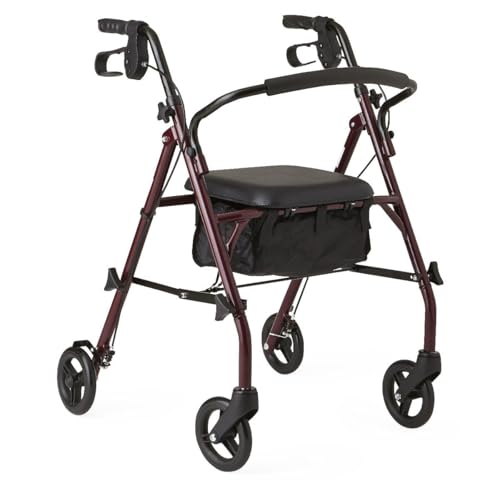Walk This Way: Why Choosing the Right Walker Matters
Selecting the right walker is essential for seniors seeking to maintain their mobility and independence. The impact of a good walker extends far beyond just physical support; it can also enhance your confidence while walking. With the right choice, you can navigate daily activities with ease and comfort.
Understanding your unique needs is the first step in this decision-making process. From various types of walkers to essential features, there’s much to consider. The perfect walker will not only meet your requirements but also adapt to your lifestyle, ensuring that every step you take feels secure and empowering. Let’s explore the key aspects that will help you make an informed choice!




Understanding Your Needs
When it comes to choosing a walker, evaluating your personal needs is critical. Start by reflecting on your mobility limits: do you require assistance for balance, strength, or both? For instance, if you find yourself losing stability on uneven surfaces or need help covering longer distances, this will shape your walker choice significantly.
Lifestyle Considerations
Consider your daily routine. Are you primarily indoors, or do you plan to use your walker outdoors as well? If outdoor walks are important to you, look for walkers with durable wheels and a sturdy frame to handle different terrains.
Personal Comfort
Height is another essential factor—be sure to choose a walker that adjusts to your height, so you can stand upright without straining. Lastly, think about any additional features that might improve your experience, such as comfortable grips or removable accessories like trays and baskets.
By understanding these variables and prioritizing your specific needs, you will be better equipped to select a walker that not only supports you but also enhances your overall quality of life. With that clarity, the next step is to look at the different types of walkers available to find one that truly fits your requirements.
Types of Walkers: A Comprehensive Overview
When it comes to selecting a walker, choosing the right type is crucial for addressing your individual mobility challenges. Here’s a breakdown of the various walkers available, each with unique features and best-use scenarios.
Standard Walkers
Standard walkers are the traditional option, featuring four legs and no wheels. They provide maximum stability for those who need extra support while walking. If you primarily walk indoors or on level surfaces, a standard walker may serve you well. They require more effort to lift but are ideal for individuals focusing on strength building.
Rollators
Rollators, unlike standard walkers, come equipped with wheels—typically four—that allow for easier movement. They often include hand brakes, a seat, and a storage basket. If you are looking for a walker that provides both stability and the ability to rest during walks, a rollator is an excellent choice. The Drive Medical 4 Wheel Rollator with Seat exemplifies a top-quality option designed for comfort and convenience.
Knee Walkers
For those recovering from foot or ankle surgeries, knee walkers present a practical alternative to crutches. These specialized walkers allow you to rest your knee on a cushion while propelling yourself with the other leg. They are particularly beneficial for maneuvering around the home or during rehabilitation.
By understanding the distinct types of walkers available, you can more effectively match your needs with the right solution. This will pave the way for you to explore essential features to consider when making your selection.
Features to Consider When Choosing a Walker
When selecting a walker, understanding the critical features can make a significant difference in your comfort and efficiency. Here are some key aspects to keep in mind:
Weight Capacity
Assess the weight capacity of the walker to ensure it can safely support you. Most walkers have a standard capacity of around 300 pounds, but options like the Medical King Lightweight Walker with Wheels have diverse capacities to cater to different users.
Adjustability
Look for walkers with adjustable height settings. This feature allows you to customize the walker to match your height, ensuring a natural posture and reducing strain on your back and arms. An adjustability range of about 5-7 inches is common in many models.
Wheel Size
Consider the size of the wheels based on where you’ll use your walker. Smaller wheels work well on flat surfaces indoors, while larger wheels are ideal for navigating rough or uneven terrains outdoors.
Storage Options
Many walkers provide practical features like storage baskets or trays. These can be incredibly handy for carrying essentials like water bottles, personal items, or even groceries, allowing you to maintain independence during outings.
By focusing on these features, you can better align your walker choice with your lifestyle needs. Next, we will explore disability considerations to ensure your walker provides maximum comfort and safety.
Disability Considerations: Adapting for Comfort and Safety
Selecting a walker tailored to your specific disabilities or conditions can significantly enhance your mobility experience. For individuals living with arthritis, limited upper body strength, or any other mobility-related challenges, certain adaptations can provide essential support.
Customization for Specific Needs
- Ergonomic Hand Grips: Choose walkers equipped with soft, cushioned grips that are easier to hold. This adjustment is particularly beneficial for arthritis sufferers, reducing pain during use.
- Seat Options: If you experience fatigue easily, consider a rollator walker with a built-in seat. Take regular breaks during outings to conserve energy and avoid discomfort.
- Weight and Size Considerations: If you have limited upper body strength, lighter walkers are easier to maneuver. Look for models with aluminum frames, like the , designed to balance sturdiness with a manageable weight.
- Height Adjustment: Ensure the walker can be adjusted to your height to prevent strain. A walker that is too tall or short can lead to discomfort or reduced effectiveness.
- Wheel Size and Type: Smaller wheels are great for indoor use, but if you venture outdoors, consider larger, more robust wheels that can handle curbs and uneven surfaces.
By focusing on these adaptations, you can create a walker experience that ensures your comfort and safety. The next step involves testing your walker to guarantee that it fits your needs perfectly.
Testing Your Walker: Ensuring Proper Fit and Function
Before you commit to a walker, it is crucial to test it to confirm that it meets your needs for both fit and functionality. A proper assessment can prevent discomfort and enhance your mobility experience.
Assessing Fit
Height Adjustment: Ensure the walker is set to the correct height. Stand tall with your arms relaxed by your sides. The hand grips should fall approximately at wrist height. If they are too high or low, adjust the height settings accordingly.
Stability Test: While holding the walker, try to shift your weight from side to side. A correctly fitting walker should feel stable and secure, allowing you to maintain your balance without strain.
Length and Width: Check that the walker fits comfortably within your living spaces. You should be able to navigate doorways and hallways without difficulty, ensuring it doesn’t snag on furniture or walls.
Functionality Checks
By thoroughly testing your walker, you can identify any necessary adjustments before making a purchase. Up next, we will discuss how to properly maintain your walker to ensure its longevity and effectiveness.
Maintenance and Care for Your Walker
To ensure your walker remains a reliable support tool, regular maintenance and care are essential. Just like any other piece of equipment, a well-maintained walker will offer you greater safety and longevity.
Common Issues to Watch For
Cleaning and Care Tips
- Regular Cleaning: Wipe down your walker with a mild soap solution to keep it hygienic, especially if you frequently use it outdoors.
- Storage: If possible, store your walker in a dry, clean space to prevent exposure to moisture and dirt.
- Lubricate Moving Parts: Use a silicone spray on wheel bearings and joints to keep them moving smoothly.
- Annual Inspection: Consider conducting a comprehensive check of your walker yearly or more frequently if you use it often. You may even want to invest in a maintenance kit, such as the , which offers essential tools for keeping your walker in top shape.
By prioritizing maintenance, you’ll enjoy a smoother, safer walking experience. This dedication to care will ultimately empower you to move forward with confidence in the next steps of your mobility journey.
Moving Forward with Confidence
Choosing the right walker is essential to enhancing your mobility, independence, and overall quality of life. By understanding your needs, exploring the various types of walkers, and considering important features, you can make an informed decision that suits your lifestyle.
Remember, testing your walker for fit and function ensures safety and comfort. Take the time to maintain your walker regularly for optimal performance. With the right walker, you can confidently navigate the world around you. Embrace your journey—it’s time to walk this way!

